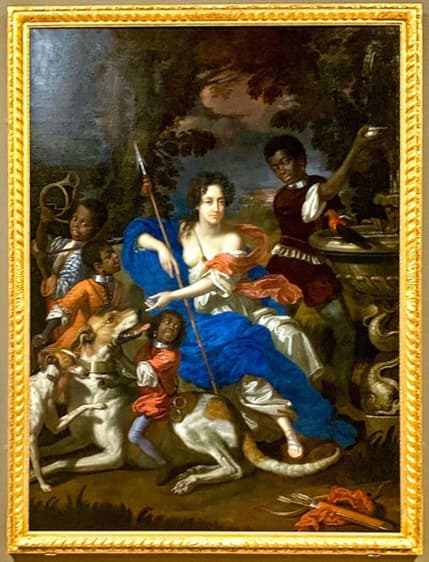Dr Silke Ackermann, Director of the History of Science Museum, discusses the boy in the Chardin portrait and reflects on what it means to be a meeting point for people, science, art and belief.

It’s three years since the Museum started collaborating with History of Art student Camille Leadbetter to uncover the story of the black boy in the portrait of Sir John Chardin. What have you found out?
Camille started working with us in late 2019, but her access to libraries and archives was inevitably restricted by the COVID pandemic.
Based on the research she was able to complete, she concluded that we may never know the boy’s name. It is likely that the artist created the boy as a “fictive instrument” — a “symbol of the exotic” painted in to emphasise how knowledgeable and well-travelled Chardin was.
In other words, the boy may be a generic depiction rather than an individual whose identity we can uncover.
It was a device used in many European artworks in the 1700s.

Camille was able to show how modern galleries display and interpret similar artworks.
In one of her blog posts, she discussed Tate Britain’s British Baroque exhibition of 2020.
They gave visitors advance warning that the display included degrading depictions of enslaved children, and directly addressed issues of dehumanisation and assumed racial supremacy.
Hortense Mancini, Duchess of Mazarin, as Diana (1684)
by Benedetto Gennari.
The boy in the Chardin portrait may not have a name, but he does represent the lived experience of thousands of people during this period.
You walked past the portrait every day to reach your office. How has working on this project changed how you — and others — saw it?
We used to look the portrait on a daily basis, but after working on the project we saw it — and not just from one physical angle, but from diverse perspectives.
We know from Camille’s research — and our own experience — that visitors either didn’t notice the portrait at all, or caught sight of it from the turn in the stairs and wondered what it was.
But it is a busy junction up there with no space to pause and study the painting.
Working with our community-focused teams (called ‘Community Connectors’) really brought home how damaging it was to have a portrait with such a complex story isolated in this ‘pride-of-place’ position.
One of them told us that the boy caught his son’s attention because it is the only image in the Museum of someone who looks like him.

But he struggled to answer his son’s questions about the boy’s identity, what the collar means, why there is a tear on his cheek — and why the portrait hangs in that position at all.
Camille was right to challenge us on our interpretation, which was sadly lacking — and didn’t even mention the boy.
This project has reinforced my belief that our role as a Museum isn’t just to provide richer information. Visitors need space and time to take in what they are seeing, to reflect, and to process it in their own way.
How will you change the way the Museum tells the story behind this painting?
There are actually two histories from the 1700s here:
- how enslaved people were portrayed in Western European art, and
- Sir John Chardin and his travels in Safavid Persia and the Near East.
Camille’s research has shown us that the portrait in its current location can’t successfully share either of those stories with visitors.
The painting is owned by the Ashmolean Museum – they kindly loaned it to us in the 1950s because its ornate frame depicts a number of scientific instruments.
After careful consideration, we came to the conclusion that the Ashmolean is the better guardian for it: they have the expertise in art history — and the gallery space to contextualise and interpret the portrait appropriately. That’s why we have worked with our colleagues to transport it safely back into their care in Beaumont Street.
Sir John Chardin’s story is also best told next to the objects which were his area of expertise. That’s why our Head of Public Engagement is now working with our curator for the Islamic Collection on fresh interpretation. Later in 2023, visitors will be able to explore the history of Sir John Chardin next to the astrolabe made for the Safavid Shah Abbas II.
What’s next for that ‘pride-of-place’ position at the top of the Museum stairs?
We already have a few exciting ideas and we’ll be consulting with our audiences over the next few weeks.
Given how prominent — but restricted — the space is, we would like a simple, striking message which celebrates how every human who has ever lived anywhere in the world is part of the same universe.
We’re a small museum full of big ideas, so I’m looking forward to walking past something very different on the way to my office which shows what it means for us to be a meeting point for people, science, art and belief.
Dr Silke Ackermann is the Director of the History of Science Museum at the University of Oxford
Other posts in this series:
Beginning the Process of Decolonising the History of Science Museum’s Collection